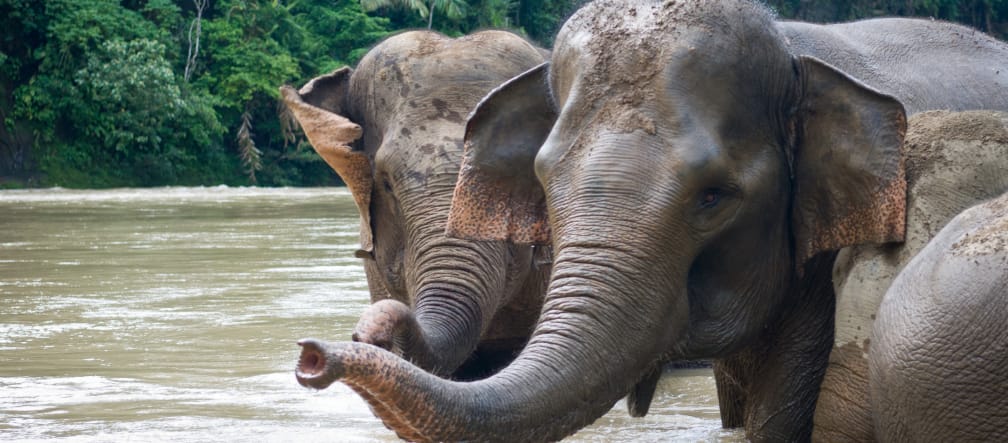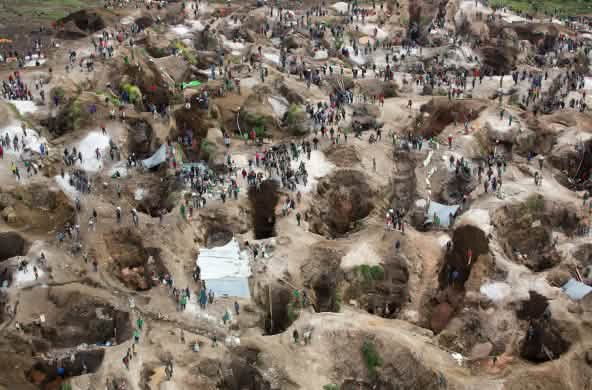
Completed campaign
The last Sumatran elephants need your voice!
Some of the last Sumatran elephants roam the forest of Sepintun – a habitat that is being trashed for oil palm, pulp and rubber plantations. Conservationists have now discovered the remains of poached elephants there. Tell the authorities to give the elephants’ home the protection it deserves!
To: Mr. Sahimin, director of the Jambi Environmental Agency (BKSDA)
“Some of the last Sumatran elephants roam the forests of Sepintun, a habitat that urgently needs to be protected from the threat of industrial plantations.”While searching for rattan in a patch of forest at Bukit Kausar, Mulkan came to an abrupt stop in front of an elephant skull and scattered bones. Mulkan, a member of the Suku Anak Dalam Batin Telisak indigenous people, was reluctant to report the find to the authorities. Instead, he turned to Marhoni, a smallholder from the nearby village of Sepintun, who has been a voice for Sumatra’s elephants for years.
“Just a few years ago, the site of this rubber plantation on the Semambu, Telisak and Meranti rivers was untouched primary forest full of irreplaceable ancient trees,” Marhoni recalls. “And elephants were everywhere.”
No more than 150 elephants currently live in all of Jambi province. They are critically endangered by the oil palm, pulp and rubber plantations and coal mines that are eating away at their habitat.
All but 1,500 hectares of Sepintun’s forests are gone. The last fragment of primary forest is home to a small herd of female elephants and their calves. They still follow their ancient trails, many of which now lead through plantations.
“We call the elephants our friends,” explains Marhoni. “Like us, they have been living here for generations.”
However, as far as companies and the authorities are concerned, the elephants do not exist: Only by denying that elephants still live in the region will they be able to clear the forest of Sepintun for plantations.
Marhoni is supported by the NGO Perkumpulan Hijau (Green Association). Director Feri Irawan is urgently calling for a review of the concessions and protection for Sepintun forest.
“The Sumatran elephants themselves are protected,” Feri explains. “But if their habitat is destroyed, they will die.”
Tell the authorities of Jambi province to recognize the existence of Sepintun’s elephants and protect their forest!
The Sumatran elephant
The Sumatran elephant (Elephas maximus sumatranus), a subspecies of the Asian elephant, differs in many ways from the African elephant. Only males have tusks. Female elephants and their calves roam the rainforests in herds of six to ten. Male elephants are solitary. Sumatran elephants live for up to 80 years.
The Sumatran elephant is classified as “critically endangered” on the IUCN Red List. The greatest threats they face are human-elephant conflicts and loss of habitat.
The WWF estimates that 2,400 to 2,800 elephants roamed Sumatra ten years ago. According to the environment ministry, the population was 1,724 in 2014. In Jambi province, 150 elephants remain. Experts fear that the estimates may be too high, as Sumatran elephants are frequently killed in human-animal conflicts or for their ivory.
The numbers of elephants falling victim to poachers and poisoning by plantation workers is increasing steadily.
Jambi province
According to estimates by local environmental groups, Jambi has lost 200,000 hectares of primary forest in the past four years alone. This amounts to an area the size of eight football fields every hour. The province is now dominated by oil palm, acacia and rubber plantations, as well as coal mines. Not one single elephant habitat is protected – they are, without exception, concession areas of the plantation and mining industries.
The ALN rubber plantation
The ALN rubber plantation was established in 2009 and covers around 10,000 hectares. Immediately after the intact primary forest was cleared, the elephants entered Sepintun’s settlements and raided crops on an area of 20 to 30 hectares. This is only one of many human-animal conflicts on Sumatra.
ALN’s documents make no mention of the elephants, and the BKSDA environmental authority simply denies their existence.
An expedition under scientific direction by the Green Association in 2011-2012 clearly documented the presence of an elephant herd.
To: Mr. Sahimin, director of the Jambi Environmental Agency (BKSDA)
Dear Mr. Sahimin,
I am very concerned about the fate of the critically endangered Sumatran elephants. Less than 150 elephants are reported to remain in Jambi province. A small herd lives in an intact primary forest near the village Sepintun at Bukit Kausar.
This forest is located in the concession areas of PT. Alam Lestari Nusantara (ALN), PT. SAM Hutani and PT. REKI (Hutan Harapan). The decimation of the elephants’ forest habitat has led to them repeatedly roaming through concession areas, prompting conflicts with the companies and local people.
In several cases, locals have discovered remains that indicate that the elephants may have been killed. The existence of such remains, however, also confirms that elephants still live in the area.
Please do everything in your power to ensure that the existence of the elephants is recognized and the Sepintun forest is protected. The survival of Sumatran elephants in Jambi is in your hands!
Sincerely,

